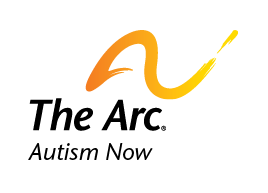A Parent’s Introduction to Applied Behavioral Analysis
 For the parents of a child with autism, the months after a diagnosis can be a difficult period of adjustment. The amount of new information can seem overwhelming at times. One of the terms parents will have to familiarize themselves with is ABA or Applied Behavioral Analysis. ABA refers to the study of how behavior is learned including the factors that influence behavior and the circumstances in which certain behavioral practices can be applied to specific situations. To put it simply, ABA provides parents and educators with insight into how a child learns.
For the parents of a child with autism, the months after a diagnosis can be a difficult period of adjustment. The amount of new information can seem overwhelming at times. One of the terms parents will have to familiarize themselves with is ABA or Applied Behavioral Analysis. ABA refers to the study of how behavior is learned including the factors that influence behavior and the circumstances in which certain behavioral practices can be applied to specific situations. To put it simply, ABA provides parents and educators with insight into how a child learns.
It’s important to remember that no two ABA programs look exactly alike. The techniques used as well as the environment in which ABA takes place tend to vary widely. At home or in school, in a group or one-on-one, ABA is an ongoing process and will usually be conducted in a range of styles across many different areas of behavior. As children with autism learn and behave in many different ways, ABA is a practice of determining which environment or learning methods work best for an individual child with autism. The right instructor, activity or environment may work for some children with autism and be less effective for others.
ABA can be used to promote certain behavioral practices across all areas including school and home life, relationship building and self-care techniques. Some children with autism may have trouble paying attention in school, while others may lack the skills necessary to make friends and build new relationships. ABA can also be used to limit negative behavioral patterns such as aggression, overstimulation, anxiety and self-injury. The role of ABA all depends on the needs of the individual child.
Getting Started
Before a child with autism can be enrolled in an ABA program, they’re needs and abilities need to be evaluated. Typically, the process begins with a series of developmental assessments. The first of which is known as a diagnostic assessment. Performed by a licensed psychologist, the diagnostic assessment provides a more in-depth review of a child’s diagnosis, often ruling out a number of other related disorders including Asperger’s syndrome or Persuasive Developmental Disorder – Not Otherwise Specified (PDD-NOS).
From there, a child with autism will undergo a developmental assessment. This is a process of determining how a child is developing across all areas as compared to children of the same age. The developmental assessment can measure every part of a child’s skill level including language and motor capabilities, learning and social skills, cognition and other adaptive qualities. A range of professionals can perform a developmental assessment including experienced educators, ABA providers, psychologists, and social workers.
A child with autism that exhibits difficulty in a certain area of development may be asked to take part in a domain specific assessment. These types of assessments focus on a specific area of development. Certified specialists are needed to perform certain domain specific assessments. For example, a licensed psychologist would be tasked with performing a social interaction assessment. A speech pathologist would need to perform a language-based assessment.
With each assessment, parents become more informed about their child’s specific needs. This provides parents with more insight into what type of ABA program will be right for their child. If a child struggles in a particular area, parents should be on the lookout for an ABA program that specializes in addressing those specific skill sets.
What to Look for in ABA?
Just as ABA can take on many different forms and practices, so do ABA providers and instructors. It’s important for parents to find a certified ABA instructor that meshes with their approach to parenting and caregiving. Parents need to work with the ABA instructor in order to bring about meaningful and positive change in a child’s behavior. As parents start searching for a suitable ABA program for their child, they’ll need to get a sense of how the program instructor operates and how they believe ABA should be administered. Parents need to find an ABA instructor that is certified by the Behavior Analyst Certification Board (http://bacb.com/). As the level of experience varies among ABA providers, parents need to ask questions to ensure that the ABA provider will be a right fit for their child.
A quality ABA program should be prepared to use a range of techniques to bring about meaningful change in a child’s behavior including but not limited to the inclusion of special interests as demonstrated by the child, prompt and fading techniques, and rewards-based learning techniques. An ABA program that’s willing and capable of changing their approach to the learning process will be better able to address a child’s needs. Parents should look for a low teacher to student ratio, especially in the first few years of ABA. Quality programs will usually combine a mix of instructor-led activities and child-initiated activities to bring about more meaningful change. The instructor should encourage self-management techniques, helping the child build a sense of independence as the program carries on. Finally, an ABA program should include some level of peer-to-peer training, giving the child the chance to build his or her social skills and develop new relationships.
The ABA Process
Once parents have settled on an ABA program for their child, the instructor and the parents will coordinate a routine schedule. The amount of ABA a child needs will depend on their skill level. Intensive ABA programs could be anywhere from 25 to 40 hours a week for 1 to 3 years, while more mild programs could be just a few hour-long sessions a couple of times a week. ABA should extend into the child’s home life. Parents need to be able to work with the ABA instructor to reinforce the principles of ABA through the day. This may include parents encouraging positive behavior, limiting negative behavior and being a strong role model for their children. Cooperation between parents and ABA providers is the key to a child’s success in ABA.
After spending some time with the child, the ABA instructor will draft a series of goals for the child to work toward. The goals should correspond with the child’s current skill level and should progressively help them become more independent and successful over time. Goals should address the child’s needs across all areas of behavior and should be broken down into attainable steps. Parents and the instructor will meet often to make sure that the child is on track to meet his or her goals, reassess the effectiveness of the learning process and make changes as needed.
The Benefits of ABA
ABA is a proven method of bringing about meaningful change in a child’s behavior. In regulation with the Individuals with Disabilities Education Act (http://idea.ed.gov/), children with disabilities must have access to appropriate and individualized education depending on their needs. ABA is the only program to meet such standards. However, success does not happen overnight. Children with autism will respond differently to ABA. Some may make progress early on, while others may be slow to adapt. Additionally, some children may excel in some areas such as reading comprehension and communication and yet, struggle in other areas such as social interaction and peer-to-peer bonding.
Parents should be patient as their child begins the ABA process. There is no sure fire path to success. ABA is an ongoing trail-and-error method of assessing a child’s ability to learn and implement new behavior. Parents can download the Autism Speaks Parent’s Guide to ABA (https://www.autismspeaks.org/science/resources-programs/autism-treatment-network/atn-air-p-applied-behavior-analysis) for more information. Finding a quality ABA program is the first step toward bringing about meaningful change in a child’s behavior.
One thought on “A Parent’s Introduction to Applied Behavioral Analysis”
Leave a Reply
You must be logged in to post a comment.


Your article is very helpful. Thanks a lot.